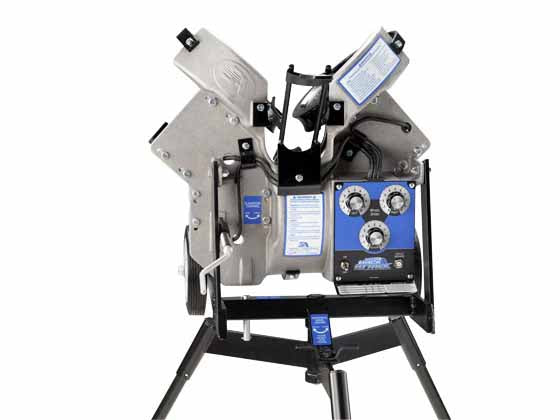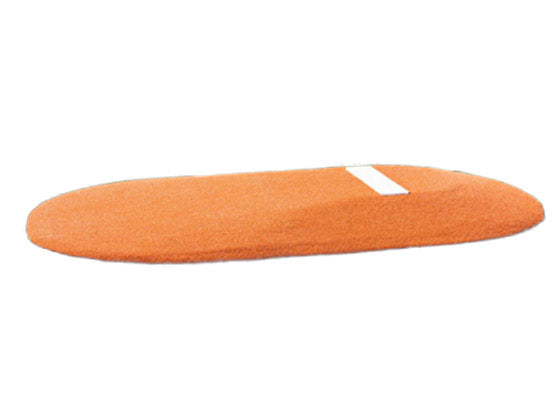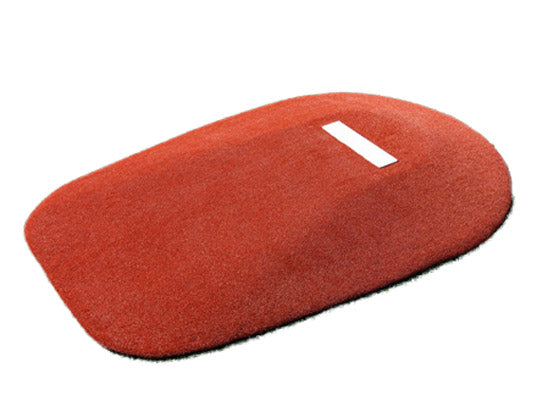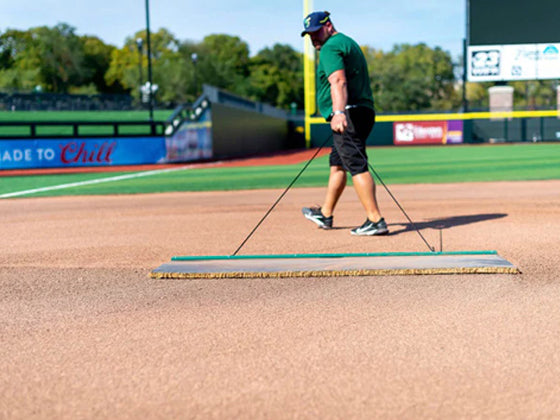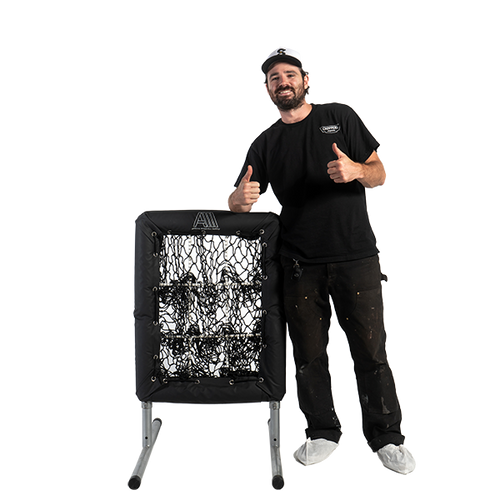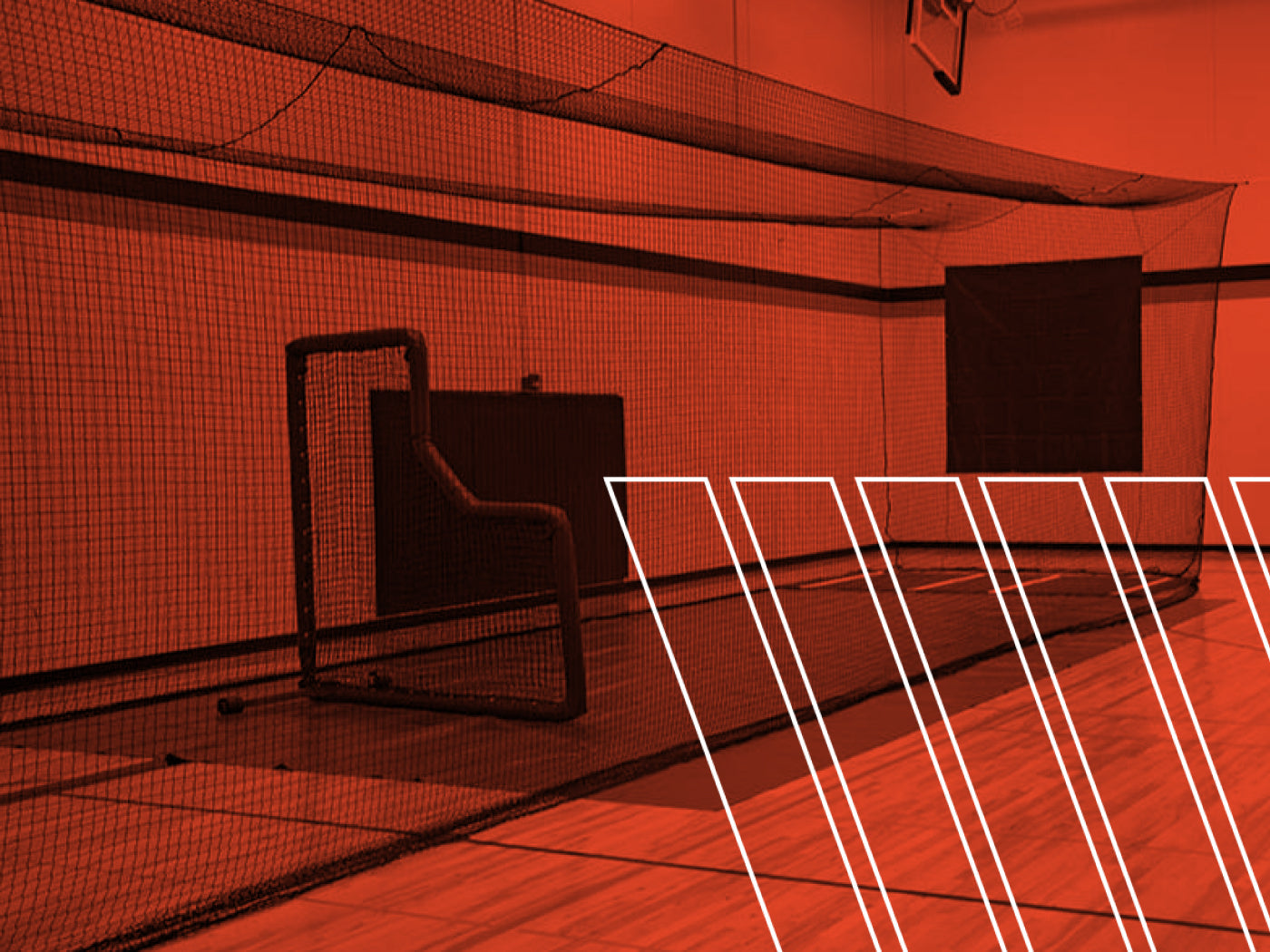
Travel baseball comes with tougher competition, faster pitching, and higher expectations than local leagues. To keep up, your child needs more than just game-time experience, they need more intentional and consistent training. Batting cages offer the perfect space to refine their swing, improve timing, and build confidence at the plate.
But practice isn’t just about taking more swings—it’s about training with purpose and determination. With the right drills, structured routines, and a balance of work and recovery, batting cage sessions can turn raw talent into real results.
In this guide, we’ll discuss six (6) reasons why a batting cage is an excellent stepping stone in your player's baseball journey. You’ll also learn the key skills to focus on when practicing in the cage for travel baseball. Let’s get started!
Benefits Of Batting Cages For Travel Ball Preparation
Batting cages are vital in preparing your child for the demands of travel baseball. They offer a structured space to develop crucial skills, adapt to game-like scenarios, and refine techniques for competitive play. Other benefits are:
Build Muscle Memory And Consistency
Repetition is the key to developing a reliable and consistent swing. Each time your child steps into a batting cage, they reinforce muscle memory by taking controlled swings. Whether they’re hitting off a tee, a pitching machine, or a live pitcher, the repetitive motion helps their body learn the correct mechanics—leading to more consistent contact during games.
For example, if your child struggles with rolling their wrists too soon, they can focus on drills (like the Top-Hand Drill) that encourage a proper follow-through. Over time, these minor adjustments become second nature, allowing them to perform confidently under pressure.
Plus, batting cages remove in-game distractions, so your child can fully concentrate on their swing path, stance, and weight transfer without worrying about defensive plays or base running. So check out and shop exclusive batting cages for kids.
Improved Timing Against Different Speeds
Another huge benefit of the batting cage is how it improves timing. One of the biggest challenges young players face in travel baseball is adjusting to varying pitch speeds. Batting cages help bridge this gap by allowing your child to practice against pitches at different speeds and prepare them for unpredictable game situations.
By using a pitching machine or a coach adjusting speeds, your child can train their eyes and reflexes to recognize pitch velocity and adjust their swing accordingly. For instance, switching between 50 mph and 70 mph pitches teaches them to react quickly, stay patient on slower pitches, and maintain a balanced swing.
This adaptability is crucial when facing advanced travel ball competition, where pitchers constantly mix their speeds to keep hitters off balance.
If you're trying to decide between indoor and outdoor batting cages, there's a great article that breaks down the benefits and considerations of each option. This resource can help you determine which type best suits your needs, whether you're planning for year-round practice or seasonal play.
Improved Swing Mechanics
Batting cages provide a focused setting where your child can work on the technical aspects of their swing. Without the pressure of an actual game, they can take time to break down their mechanics—working on foot positioning, hand placement, and follow-through to maximize power and accuracy.
For example, players can adjust their grip or stance based on the results of their swings and continue practicing. They can also experiment with different stances to find what feels most natural and effective. With instant feedback from each swing, they’ll have the opportunity to correct flaws that might go unnoticed during live play, ultimately leading to a more efficient and powerful swing. For improved convenience, we also offer deals on roll away batting cages.
Improves Hand-Eye Coordination
Hand-eye coordination is critical for making solid contact at the plate. Batting cages help refine this skill by exposing your child to a steady stream of pitches, forcing them to track the ball and react quickly. The more they practice, the better their brain and body synchronize to recognize pitches and make accurate swings.
Soft toss or smaller training balls are great drills to improve hand-eye coordination. By hitting smaller objects, your child sharpens their ability to focus and react, making it easier to square up regular baseballs during real games.
Adjusting To Pitching Variability
Every pitcher has a unique style, and in travel baseball, your child will face a mix of fastballs, curveballs, sliders, and changeups. Batting cages offer the opportunity to simulate these different pitches, helping players adjust and become more versatile hitters.
For example, if your child struggles with off-speed pitches, they can set the pitching machine to throw slower breaking balls, training them to stay back and drive the ball with proper timing. Practicing against different pitch types ensures they won’t be caught off guard when facing a new pitcher in a big game.
Consistency Under Pressure
In travel baseball, games are often tense, and players must perform under pressure. Batting cages help athletes develop consistency even when the stakes are high. In a cage, players can simulate high-pressure scenarios by facing pitches at game speed, where they know they need to deliver results.
The repetitive nature of cage practice builds mental and physical endurance. This makes it easier for players to maintain their focus and execute their swing under stressful conditions. As they become more accustomed to facing high-speed pitches and game-like situations, they are less likely to get rattled during actual games.
Key Skills To Develop In The Batting Cage
Batting cages provide an ideal environment for your child to develop a strong foundation in essential baseball skills. Focused practice here can enhance both physical techniques and mental readiness for travel ball competitions.
Bat Speed and Power
A faster swing leads to harder hits, which is crucial for facing elite travel ball pitchers. Your child can work on explosive movements in the cage by using weighted bats and resistance bands. They can also focus on fast-twitch muscle activation through rapid-swing drills. By practicing and driving the ball with full extension, they’ll develop the power to hit through the gaps and beyond the outfielders by practicing and driving the ball with full extension.
Plate Discipline and Pitch Recognition
Travel ball pitchers throw a mix of fastballs, breaking balls, and off-speed pitches.
Recognizing different pitches early helps players avoid swinging at bad pitches and make better contact. The batting cage is the perfect place to train pitch recognition by using reaction drills, such as alternating speeds on a pitching machine or working on hitting only certain pitch locations. The more your child learns to track the ball out of the pitcher’s hand, the better their plate discipline becomes.
Swing Mechanics and Follow-Through
A proper swing isn’t just about contact- it involves control, balance, and follow-through. Your child can fine-tune mechanics in the cage by focusing on hand positioning, stride timing, and weight transfer. Drills like the top-hand and high-finish drills help prevent rolling the wrists too soon, leading to stronger, more controlled hits. And repetition in a controlled environment ensures their swing becomes more efficient and accurate. You can also shop backstops for batting cages at our store.
Adjusting to Different Pitching Styles
In a travel ball, your child will face pitchers who throw at different speeds and arm angles in a travel ball. The batting cage allows them to work on adjusting their timing by practicing against varying pitch speeds or facing live pitching in controlled sessions. A great drill is alternating speeds, where a coach or machine mixes in slow and fast pitches to challenge their reaction time and adaptability.
Hand-Eye Coordination and Contact Consistency
Consistently making solid contact is key. The more your child trains their eyes to track the ball and time their swing, the more likely they will make solid contact on the pitch. Drills like soft toss with mini balls or reaction training with colored balls help hitters focus harder on the ball, sharpening their hand-eye coordination. This skill translates directly to game-time performance, helping them make quality contact more often.
Mental Toughness and Confidence
Confidence at the plate can make or break a hitter in high-pressure travel ball situations. The batting cage is the ideal place to build a strong mental approach. Encourage your child to visualize success, set performance goals (like hitting a number of line drives in a row), and practice handling frustration. A confident hitter steps into the box knowing they’ve put in the work—and that mindset alone gives them an edge in competitive play.
Structuring Effective Batting Cage Sessions
A well-organized batting cage session helps your child prepare effectively for the travel ball. To ensure each practice is productive, focus on warm-ups, skill progression, and measurable improvement.
Start with a Proper Warm-Up
Just like warming up is done before the actual game starts, batting practice should be no different. A solid warm-up helps prevent injuries and prepares the body to swing with power. Here are some warm-up drills and techniques to put them in the mood:
-
Start with a short jog or 5-10 minutes of jumping jacks to raise the heart rate
-
Loosen up with dynamic stretches like arm circles, leg swings, and torso twists
-
Practice baseball movements by catching fly balls or fielding slow grounders
-
Build strength and stability with lunges, squats, and planks
Once they’re loose, it’s time to grab the bat.
-
Use a batting tee to work on balance, stance, and swing mechanics
-
Include hitting tee drills to develop proper swing mechanics
-
Add sprints between bases to improve agility and in-game movement
-
Use easy toss drills to sharpen hand-eye coordination before facing live pitching
Build Skills with Progressive Drills
As your child improves, introduce more challenging drills to match their development. You can start with basic pitches, such as slow fastballs, in a controlled environment to strengthen swing fundamentals, then progress to faster pitches and introduce pitch variability like sliders or curveballs when consistency improves.
Use multi-station setups and drills to keep practice engaging. Rotating through different drills keeps things fresh and helps develop well-rounded hitters. Train them on;
-
Soft toss drills, where a coach or partner tosses the ball from the side to work on timing and solid contact.
-
Front toss drills to simulate real-game situations with pitches thrown from in front.
-
Pitch location drills to teach them to handle inside, outside, high, and low pitches so they can adjust in real games. This progression helps them adapt to different pitch locations and speeds, fostering confidence and versatility at the plate.
Tracking Progress And Setting Goals
Monitoring performance and establishing clear objectives are vital for sustained improvement. However, to monitor performance, you must set short-term and long-term goals based on your child's needs. For example, aim for consistent contact in one session and improved accuracy by the next.
After setting goals, use batting cage software to collect data on key metrics like swing speed, exit velocity, and contact consistency. Tools like HitTrax provide real-time feedback, allowing players to visualize their performance and identify areas for improvement. Note pitch response times during different drills to assess adaptability.
Don’t just collect feedback. Regularly review this data to set achievable goals and conduct training sessions to address specific weaknesses. For instance, if the data indicates difficulty with inside pitches, dedicate portions of practice to drills focusing on that area. Lastly, celebrate small victories, as this positive reinforcement builds confidence and keeps players motivated for travel ball goals.
Tips For Maximizing Batting Cage Training
Batting cages effectively prepare your child for travel ball by refining essential baseball skills. Focused practice in a structured environment is key to consistent improvement and confidence.
Importance Of Repetition And Patience
Repetition builds strong muscle memory and reinforces proper batting mechanics. Batting cages provide a consistent setup, allowing your child to take hundreds of swings in a session. This repetition develops timing, hand-eye coordination, and swing accuracy.
By practicing against various pitch types, such as curveballs or fastballs, you help your child adapt to real-game scenarios. Patience during training ensures gradual progress. Avoid rushing through drills; focus on achieving quality swings emphasizing balance and power.
Over time, steady practice leads to consistent performance on the field. However, it's crucial to approach this repetition with patience. Betting improvement is a gradual process, and players should be encouraged to focus on incremental progress rather than immediate perfection.
Balancing Practice With Rest And Recovery
While consistent practice is important, overtraining can lead to fatigue, injury, and burnout. Help your child find the right balance between effort and recovery. Avoid marathon practices, especially for younger players with shorter attention spans. You can also incorporate light activities like stretching, yoga, or agility drills to keep them moving without overloading their body.
You should also schedule rest days as muscles need time to recover and rebuild for long-term improvement. Balancing practice with rest and recovery fosters a sustainable training routine, ensuring they stay healthy and motivated.
Encouraging A Positive Learning Environment
A positive environment fosters enthusiasm and confidence in young players. Celebrate small achievements and provide constructive feedback to help build self-esteem. Use encouraging language to make practice both enjoyable and rewarding. Keep things engaging by incorporating fun drills or mini-games—this helps maintain their focus and enthusiasm. Most importantly, take the pressure off by emphasizing skill development over instant results. When your child feels supported and encouraged, they’ll stay excited about training and continue to grow their love for the game.
Conclusion
Batting cages offer an incredible opportunity to prepare your child for the challenges of travel ball. Focusing on skill development, confidence building, and game-like practice, they create a foundation for success both on and off the field. By incorporating structured sessions and fostering a positive learning environment, you can help your young athlete refine their abilities while keeping the experience enjoyable.
Ready to get started? Purchase high-quality garden batting cages from our online store or learn how to build your own from scratch.
Frequently Asked Questions
What is the purpose of batting cages for kids?
Batting cages provide a controlled environment where kids can focus on improving their swing, building muscle memory, and enhancing hand-eye coordination. They also help players practice timing, pitch recognition, and game-like scenarios, preparing them for competitive travel baseball.
How do batting cages help develop muscle memory?
Repetition is key in a batting cage. By consistently practicing swings, players build muscle memory, allowing them to execute accurate and powerful hits automatically during games.
Can batting cages improve reaction time?
Yes, batting cages allow players to practice with varying pitch speeds. This helps improve reaction time by training hitters to adjust quickly to the speed of different pitches.
Are batting cages safe for kids?
Batting cages are designed to provide a safe environment for young players. Simplified pitches and protective gear ensure safety while allowing kids to improve their skills without worrying about injuries.
How can I help my child avoid burnout from batting practice?
Balance is crucial. Plan structured sessions with regular rest days between practices to prevent overexertion. Incorporate fun drills to keep practice enjoyable and celebrate small wins to maintain motivation.
How often should kids use batting cages?
3–5 sessions per week are ideal for players serious about improving. This provides consistent practice while allowing time for rest and recovery.
What types of pitches can kids practice in batting cages?
Kids can practice a variety of pitches in batting cages, including fastballs, changeups, curveballs, and sliders. This helps them adapt to pitch variability and improves their pitch recognition skills.
Do batting cages simulate real game situations?
Yes, many batting cages can replicate game-like conditions with variable pitch types and speeds. This helps players transition seamlessly from practice to live-game scenarios.
How does technology enhance batting cage training?
Modern batting cages often include technology like sensors and video analysis. These tools provide instant feedback, helping players refine their swing mechanics, enhance their timing, and track their progress effectively.
What should a structured batting cage session include?
A good session starts with warm-up drills, focuses on incremental skill progression (e.g., simple to complex pitches), and ends with measurable goal tracking. This structure maximizes improvement and engagement.
How can I maintain my child’s interest in batting practice?
Incorporate fun drills and celebrate milestones to keep practice exciting. A positive learning environment ensures kids stay enthusiastic and encourages continued growth in their baseball journey.
Are batting cages beneficial for travel baseball preparation?
Absolutely! Batting cages prepare kids for faster and more complex pitches, improve timing and coordination, and build the confidence needed for the competitive travel baseball environment.

 Contact Us
Contact Us